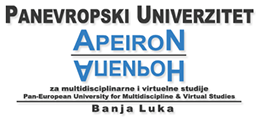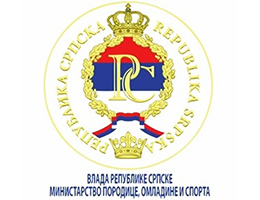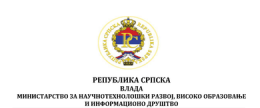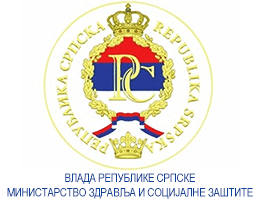The Effects of a Six-Week Preparatory Period on the Transformation of Speed and Agility Ability in Senior Female Soccer Players
Volume 13, Issue 1 (2023)
Volume 13, Issue 1 (2023)
The Effects of a Six-Week Preparatory Period on the Transformation of Speed and Agility Ability in Senior Female Soccer Players
Abstract:
The aim of this research was to determine
the effects of a six-week preparatory period on the development
of speed and agility in female soccer players of
“Emina” Women’s Soccer Team of Mostar (n=18), who
competed in the Premier League of Bosnia and Herzegovina
in the season 2021/22. In the research, variables were
applied to determine the basic characteristics of female
soccer players: Age (years), Height (cm), Mass (kg), BMI
(kg/m2), to assess speed ability: Sprint 5m (s), 10m (s),
20m (s) and agility: 10x5 m test (s), Zig-Zag test (s) and
505 test (s). The average age of female soccer players was
21.27 ± 4.57 years, average height 167.2 cm ± 5.82 cm
and average weight 60.4 kg ± 7.36 kg. The dependent samples
T-test was run to determine the statistical significance
of the differences in arithmetic means between the initial
and final measurements. The reported results of the T-test
showed that after the six-week preparatory period, the test
subjects had a lower mass (t=3.027; df=17; sig.= 0.008;
p≤ 0.05) and BMI (t=2.253; df=17; sig.= 0.038; p≤ 0.05).
Statistically significant differences at the level of p≤ 0.05,
after the program had been completed, were reported for
the agility tests 10x5m (t=3.125; df=17; sig.=0.006) and
505 test (t=3.028; df=17; sig.= 0.008). In other variables,
positive changes were reported, but they were not statistically
significant at the p≤ 0.05 level. We concluded that the
six-week preparatory period program produced statistically
significant changes in the area of agility and that the
training should focus more on improving speed and speed
endurance in the given sample of female football players
Keywords:
women’s soccer, agility, speed, training, preparatory period.
Full Text:
References:
Bangsbo, J., Nørregaard, L., & Thorsø, F. (1991). Activity profile of competition soccer. Canadian journal of sport sciences= Journal canadien
des sciences du sport, 16(2), 110-116.
Bangsbo, J. (1992). Time and motion characteristics of competition soccer. Sci Football, 6(2), 34-40.
Čolakhodžić, E., Đedović, D., Skender, N., Novaković, R., & Popo, A. (2017). Differences in Distance And Intensity Of The Movement Of
World Soccer Championship Participants 2010 And 2014. In 15 th International Sport Sciences Congress. Antalija: Turkiye.
Čolakhodžić, E. (2021). Metodologija i tehnologija naučnoistraživačkog rada. Nastavnički fakultet, Mostar. [in Croatian]
Čolakhodžić, E., Rađo, I., & Alić, H. (2016). Tehnologija treninga mladih nogometaša-nauka i praksa. Nastavnički fakultet, Mostar. [in Croatian]
Fédération Internationale de Football Association (FIFA). Women’s football member associations survey report. 2019.
Union of European Football Association (UEFA). Women’s football across the national associations. 2015.
Haugen, T. A., Tønnessen, E., Hisdal, J., & Seiler, S. (2014). The role and development of sprinting speed in soccer. International journal of
sports physiology and performance, 9(3), 432-441.
Ingebrigtsen, J., Dillern, T., & Shalfawi, S. A. (2011). Aerobic capacities and anthropometric characteristics of elite female soccer players. The
Journal of Strength & Conditioning Research, 25(12), 3352-3357.
Krišto, K. (2013). Karakteristike vrhunskih nogometašica. (Diplomski rad). Zagreb. Kineziološki fakultet Sveučilišta u Zagrebu. [in Croatian]
Little, T., Williams, A. G. (2005). Specificity of acceleration, maximum speed, and agility in professional soccer players. Journal Strength Cond
Res.;19(1):76-8. Doi: 10.1519/14253.1.
Manson, S. A., Brughelli, M., & Harris, N. K. (2014). Physiological characteristics of international female soccer players. The Journal of
Strength & Conditioning Research, 28(2), 308-318.
Mara, J. K., Thompson, K. G., Pumpa, K. L., & Ball, N. B. (2015). Periodization and physical performance in elite female soccer players. International
journal of sports physiology and performance, 10(5), 664-669.
Mirkov, D., Nedeljkovic, A., Kukolj, M., Ugarkovic, D., & Jaric, S. (2008). Evaluation of the reliability of soccer-specific field tests. The Journal
of Strength & Conditioning Research, 22(4), 1046-1050.
Mohr, M., Krustrup, P., & Bangsbo, J. (2003). Match performance of high-standard soccer players with special reference to development of
fatigue. Journal of sports sciences, 21(7), 519-528.
Mohr, M., Krustrup, P., Andersson, H., Kirkendal, D. and Bangsbo, J. (2008). Match Activities of Elite Women Soccer Players at Different
Performance Levels. Journal of Strength and Conditioning Research 22(2): 341-349. DOI: 10.1519/JSC.0b013e318165fef6.
Okholm Kryger, K., Wang , A., Mehta, R., Impellizzeri, F., M., Massey, A. & McCall, A. (2022). Research on women’s football: a scoping
review. Sci Med Football; 6(5):549-558. DOI: 10.1080/24733938.2020.1868560.
O’Donoghue P. (2001). Time-motion analysis of work rate in elite soccer. In: Notational analysis of sport IV. Porto: Centre for Team Sports
Studies, Faculty of Sport Sciences and Physical Education, University of Porto/HM Tavares Fernanado, pg. 65–70.
Pfister, G., Pope, S. (2018). Female Football Players and Fans -Intruding into a Man’s World. London: Palgrave Macmillan London. DOI:
Ramos, G. P., Nakamura, F. Y., Penna, E. M., Mendes, T. T., Mahseredjian, F., Lima, A. M., ... & Coimbra, C. C. (2021). Comparison of physical
fitness and anthropometrical profiles among Brazilian female soccer national teams from U15 to senior categories. The Journal of
Strength & Conditioning Research, 35(8), 2302-2308.
Randell, R. K., Clifford, T., Drust, B., Moss, S. L., Unnithan, V. B., De Ste Croix, M. B., ... & Rollo, I. (2021). Physiological characteristics of
female soccer players and health and performance considerations: a narrative review. Sports Medicine, 51, 1377-1399.
Reilly, T., Bangsbo, J., & Franks, A. (2000). Anthropometric and physiological predispositions for elite soccer. Journal of sports sciences, 18(9),
669-683.
Reilly, T. (1976). A motion analysis of work-rate in different positional roles in professional football match-play. J Human Movement Studies,
2, 87-97.
Shaw, W (2021). The 505 agility test: procedure, testing & normative data. Available from: https://sportscienceinsider.com/the-505-agilitytest/.
Sekulić, D., Spasić, M., Mirkov, D., Čavar, M., & Sattler, T. (2013). Gender-specific influences of balance, speed, and power on agility performance.
The Journal of Strength & Conditioning Research, 27(3), 802-811.
Sinclair, J., Edmundson, C.J., Metcalfe, J., Bottoms, L., Atkins, S. & Bentley, I. (2021). The Effects of Sprint vs. Resisted Sled-Based Training;
an 8-Week in-Season Randomized Control Intervention in Elite Rugby League Players. Int. J. Environ. Res. Public Health, 18, 9241.
https://doi.org/10.3390/ ijerph18179241.
Sporiš, G., Čanaki, M. & Barišić, V. (2007). Razlike u morfološkim karakteristikama između vrhunskih hrvatskih nogometašica s obzirom na
igračku poziciju. Hrvatski športsko-medicinski vjesnik, 22, 91-96. [in Croatian]






